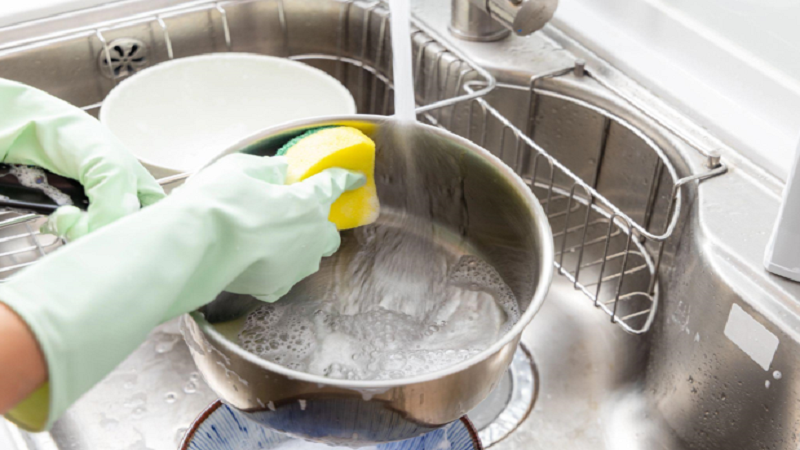As we navigate the escalating environmental challenges of our time, an issue that’s gaining prominence is responsible water management. Increasing water usage, coupled with climate change and an expanding population, has accelerated the need for water conservation. Despite this, there’s hope, and it lies in our day-to-day habits. Reducing water use within homes presents a practical approach to conserving water resources. This not only brings about the environmental benefit of preserving our planet’s most precious resource but also provides financial advantages by considerably decreasing monthly water bills. By adopting simple, sustainable changes in our lifestyle, each individual can contribute to a planet-friendly future while keeping their finances in check.
1. Understanding Water Usage at Home
The journey towards efficient water use begins with understanding our own habits. It’s critical to identify the areas within a home that demand the most water. Typically, the kitchen, bathrooms, and outdoor gardens are the spotlight zones. For perspective, consider that the average Australian household consumes over 340 litres of water per day. Many would be surprised to learn how much water is used in regular household chores like washing dishes or watering the garden. Identifying these water-intensive tasks is necessary to determine where changes can be made for the most significant impact. That’s why beginning with a comprehensive water audit is an invaluable step towards understanding personal usage and developing concrete water-saving strategies.
2. Efficient Bathroom Practices
A noticeable chunk of our daily water use happens within the confines of the bathroom. Showering, flushing the toilet, brushing teeth – all these activities are integral parts of our routines. Moderating these can lead to significant water savings. Installing water-efficient fixtures like low-flow toilets and showerheads can drastically reduce water consumption without compromising on comfort. Furthermore, significantly shortening shower duration, even by a couple of minutes, can save several litres. A straightforward yet effective habit is turning off the tap while brushing teeth or shaving—this seemingly minor gesture can save hundreds of litres annually. Bathroom leaks may seem insignificant, but they’re not, as even minor drips can lead to litres of water wasted if left unattended.
3. Water-Saving Kitchen Techniques
The heart of many homes, the kitchen offers several avenues for water conservation. When it comes to dishwashers and washing machines, try running them only when they are full. This not only saves water but also reduces energy consumption. Proper hand washing techniques for dishes, such as using a basin of water instead of running water, can also make a substantial impact. Why not consider installing an aerator on your kitchen tap? An aerator restricts the flow volume but maintains water pressure, thus reducing water waste. Additionally, instead of relying on water-heavy garbage disposals, composting kitchen food waste can reduce water usage while simultaneously enriching garden soil.
4. Mindful Outdoor Water Use
Outdoor spaces often require substantial water, but there are strategies to reduce this. Native plant gardening and xeriscaping (a gardening approach that reduces or eliminates the need for irrigation) can significantly lower your garden’s reliance on water. Smart irrigation systems deliver the exact amount of water needed by plants, avoiding wastage, and opting to water either early in the morning or later in the evening reduces evaporation. Rainwater barrels are an excellent tool for ensuring a free and sustainable water supply, providing a greener alternative for garden and lawn care. Additionally, the strategic use of mulch in your garden helps to prevent moisture loss through evaporation, reducing watering needs.
5. Leveraging Technology for Water Conservation
Technology is also playing an increasingly significant role in water conservation. Smart home apps provide real-time insights into water usage patterns, showing where and when water is consumed excessively. Water-efficient appliances reduce water use without sacrificing performance, while technological advances like greywater systems allow the reuse of otherwise wasted water. Leak detection systems can identify pipe leakage issues before they become severe, helping to prevent wastage and potential damage to your property and wallet.
Conclusion
Implementing these water-saving strategies promises long-term benefits. Not only can they help you use less water and save money, but these practices can also positively affect larger-scale global water scarcity. Sharing your journey and practical water-saving tips with the community can serve as a stepping stone, inspiring others to also join in making a difference. We must remember that every effort counts. When diverse individuals apply these methods collectively, it can help conserve a significant amount of this precious resource. It’s time to start implementing these water-saving strategies today to secure a sustainable future for generations to come.
